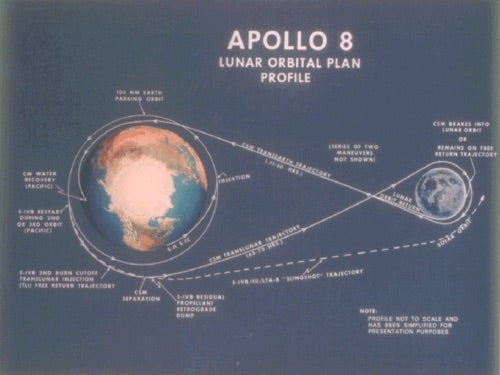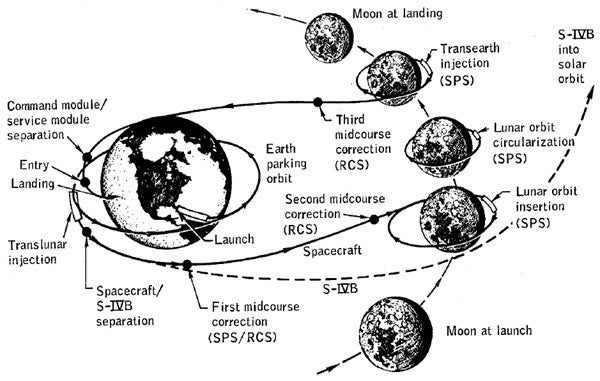There are a few things at play here that come together to make it a figure 8, so let’s start with a quick video explainer that has some visuals that will help. And then we can jump into the mission in more detail starting from a launch.
The Earth, if we think about it from a position hovering somewhere above the North Pole, rotates from west to east, which happens to be the same direction it travels around the Sun. The Moon does the same thing. It rotates west to east and travels around the Earth in the same direction, though of course, it’s day is equivalent to one month on Earth. In both cases, the eastern edge of the body, the edge towards which all that momentum goes, is called the leading edge. The opposite side away from which all that momentum goes is called the trailing edge. (To clarify because I didn’t make it totally clear in the video above: it’s the spin and the direction of travel that matters here.)
This becomes important when you do a gravity assist, also called a fly by. A spacecraft smaller than a planet — let’s say the Apollo spacecraft which is much smaller than the Moon — is affected by all the bodies near it, in this case, the Sun, the Earth, and everything else that’s exerting a gravitational pull. But when it gets to the Moon, the Moon is the closest body so its gravity will have the strongest effect on the spacecraft. If it flies past close enough and stays flying fast enough that it can’t be captured by the body to start orbiting it, that spacecraft will slingshot around. The spacecraft will get a boost of momentum and change in direction courtesy of some very clever planning by engineers on the ground.
But the side of the body matters. If the spacecraft flies past the trailing edge, it will get a bigger boost of momentum because it’s going with the direction of travel. If it flies past the leading edge, it will get a smaller boost and even lose some speed because it’s flying against the direction of the body’s travel.
Let’s go back to our Apollo-at-the-Moon example, but take it back to the start of the mission with the spacecraft sitting on the pad at Kennedy Space Centre. Every mission launched towards the east, taking advantage of the Earth’s rotation to need a little less fuel to get into orbit. From there, the next big mission event was the translunar injection or TLI burn. This changed Apollo’s orbit from a nearly circular one to an elliptical one with the apogee, the furthest point, somewhere near where the Moon would be in three days time — mission planners had to account for travel time over some 250,000 miles.
If Apollo passed by the Moon’s trailing edge, it would get an increase of momentum that would put it in an even larger orbit around the Earth. To get home, the crew would either be stuck in space a lot longer or use more fuel to make it back. This wasn’t a great option when consumables and fuel were both things crews didn’t have in abundance. But passing by the leading edge would have the opposite effect. It would act like a gravitational brake almost, changing the spacecraft’s path to an ellipse that would bring it straight back to Earth without any input from the crew.
So passing by the Moon’s leading edge brought a degree of safety into the mission, which was paramount because President Kennedy kind of made “returning him safely to the Earth” as part of the whole putting a man on the Moon thing. It also meant the crew needed to take fewer consumables with them. And another bonus was that entering the Moon’s orbit from the leading edge side demanded less fuel — again keeping consumables down.
The end result is that Apollo’s trajectory looked like a figure 8!
Now, sticklers will point out that only Apollo 13 actually flew the full figure 8. Which is true. When the service module oxygen tank ruptured, the crew didn’t have their big engine to make all the necessary burns so took advantage of the safety of the free return trajectory. But at the end of the day, every mission flew this same basic shape. They all entered the Moon’s orbit from the leading edge side, never the trailing edge side. Apollos 11 and 12 started on a path that would have the option of the free return trajectory should something go wrong, then adjusted to get into orbit and land. Later missions didn’t; NASA was more confident in the spacecraft so took a path that was simpler for the landing without this built-in safety.
Main source, and also the book to check for more info: “How Apollo Flew to the Moon” by W. David Woods.
This article was originally published on DiscoverMagazine.com.











